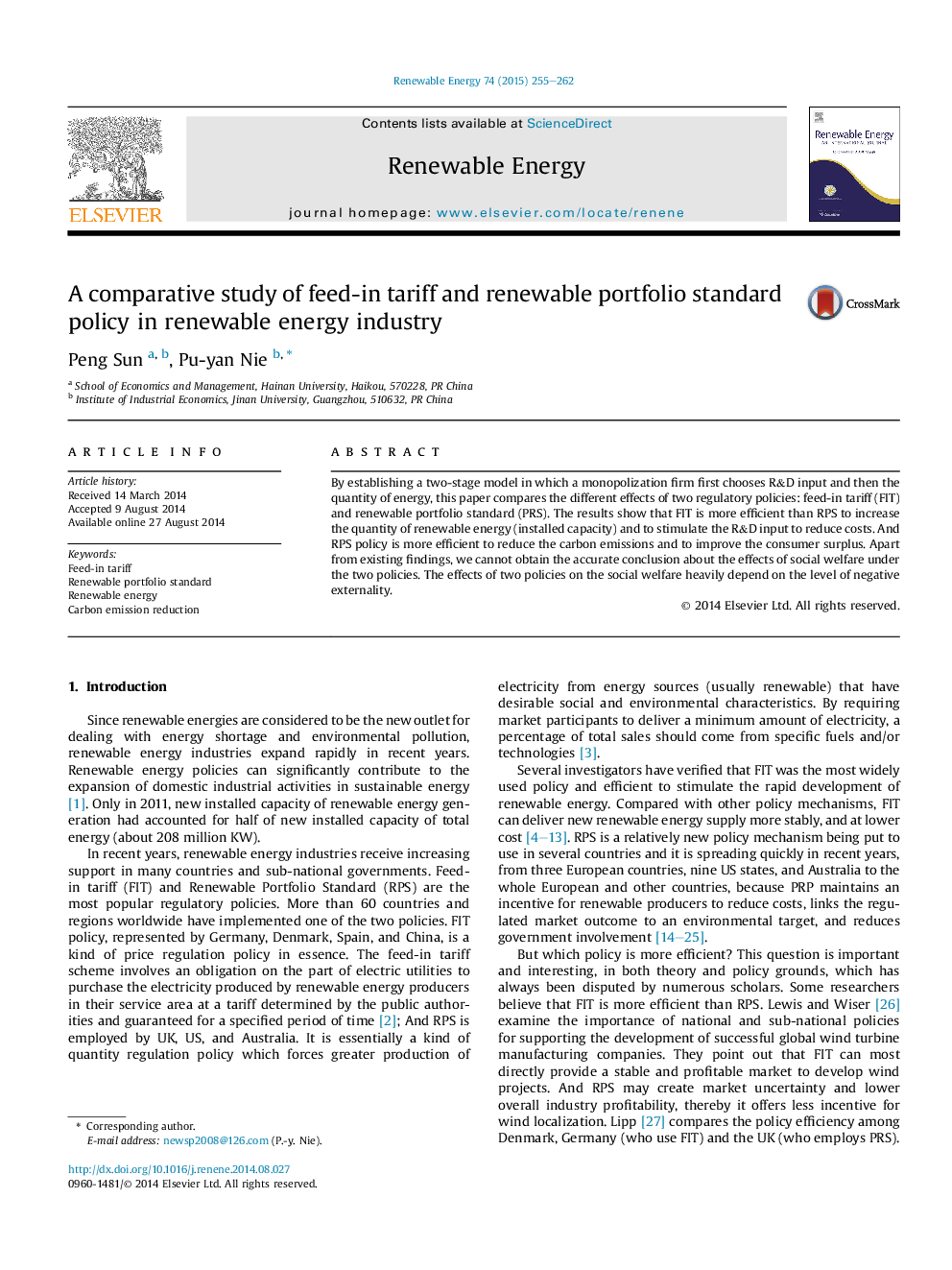| Article ID | Journal | Published Year | Pages | File Type |
|---|---|---|---|---|
| 299974 | Renewable Energy | 2015 | 8 Pages |
•We compare the different effects of two regulatory policies: FIT and PRS.•FIT is more efficient than RPS to increase renewable-energy quantity and to stimulate R&D.•RPS is more efficient to reduce the carbon emissions and to improve the consumer surplus.•The effects of two policies on the social welfare depend on the level of negative externality.
By establishing a two-stage model in which a monopolization firm first chooses R&D input and then the quantity of energy, this paper compares the different effects of two regulatory policies: feed-in tariff (FIT) and renewable portfolio standard (PRS). The results show that FIT is more efficient than RPS to increase the quantity of renewable energy (installed capacity) and to stimulate the R&D input to reduce costs. And RPS policy is more efficient to reduce the carbon emissions and to improve the consumer surplus. Apart from existing findings, we cannot obtain the accurate conclusion about the effects of social welfare under the two policies. The effects of two policies on the social welfare heavily depend on the level of negative externality.
